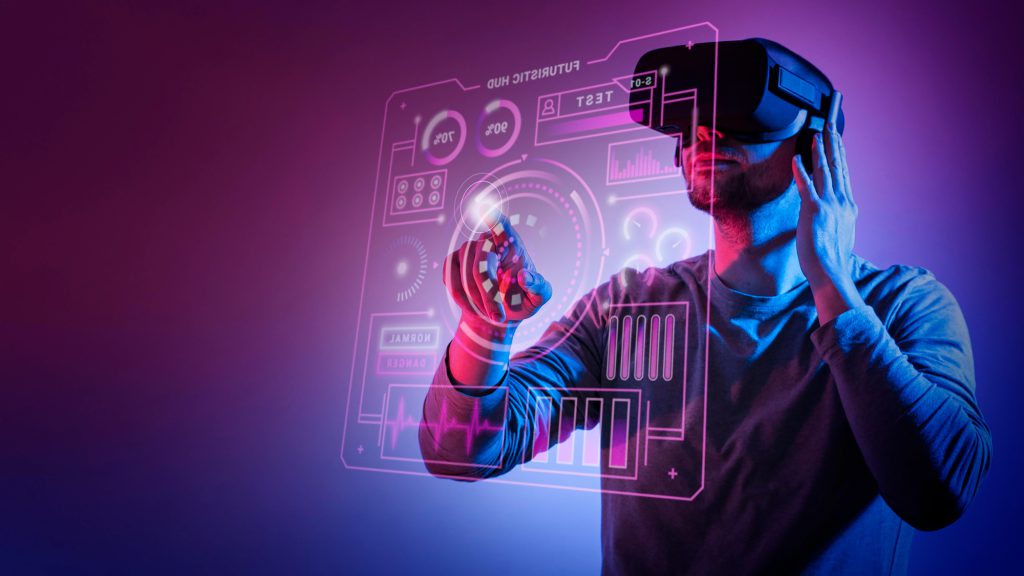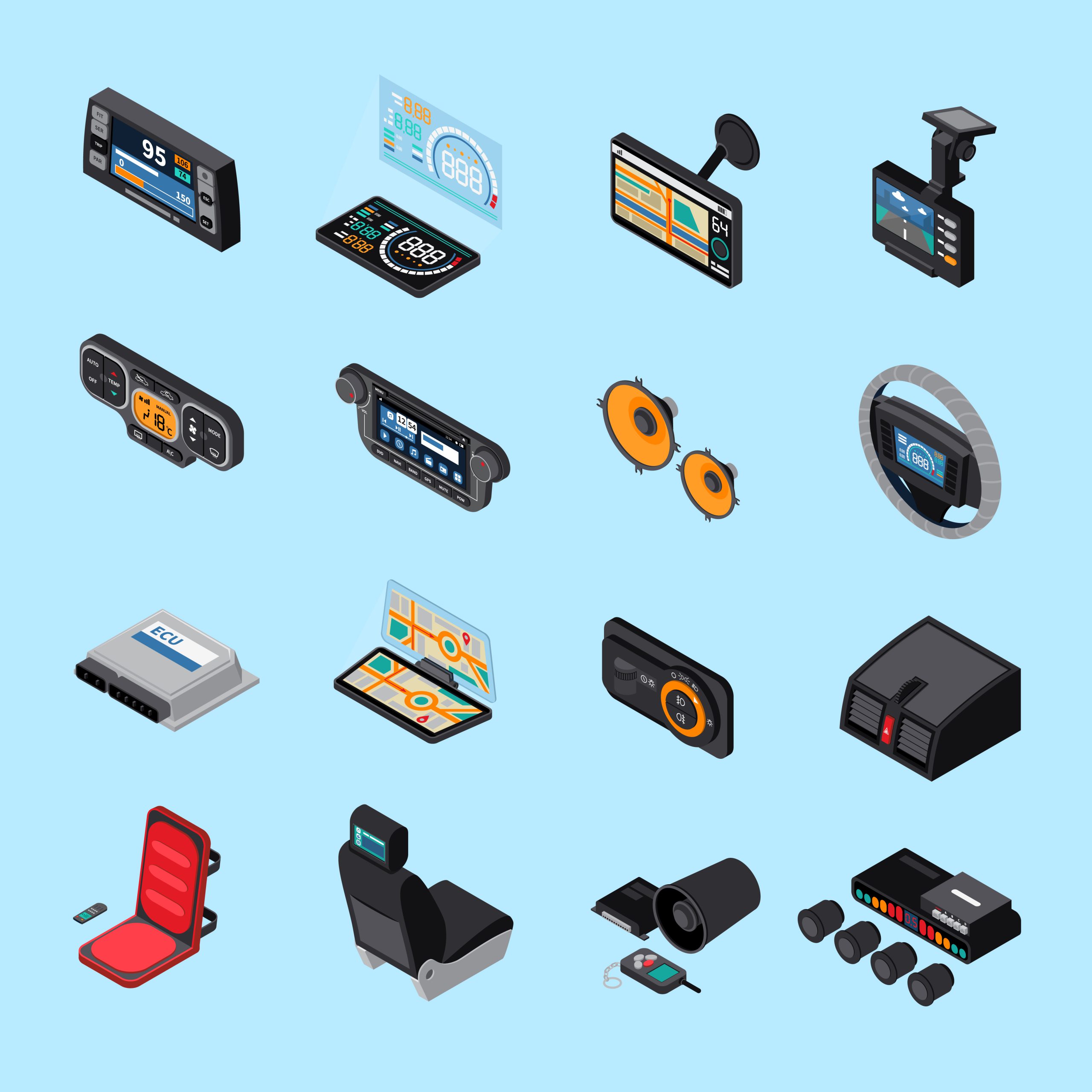Image by Freepik
Technology is becoming increasingly ubiquitous in our lives, and we continue to watch its rapid progress. As users’ needs change and businesses look to increase the possibilities of human-technology interaction, digitalization has yet to fully take off. However, experts predict that certain technology trends will dominate the IT field in 2023. In this article, we will discuss the top 10 tech trends that you should be aware of before starting any new venture.
1. The Importance of Computing Capability in Today’s Digital Era
Computing power has already cemented its position in the digital era, with nearly every gadget and appliance becoming computerized. Data science specialists predict that the computing infrastructure we’re currently building will only improve in the coming years. The advent of 5G and the potential for 6G will also bring even more power to our hands and devices. Even better, computing power is generating more tech employment in the industry, although individuals will need to acquire specific skills. This field will power the majority of jobs in every country, from data science to robots and IT management. The greater the computer power required by our devices, the greater the demand for technicians, IT teams, relationship managers, and the customer care economy.
One important aspect of this industry is RPA or Robotic Process Automation. RPA is all about computing and automation software, and it can train individuals for high-paying positions in the IT business. Some of the best occupations you can pursue after RPA include data scientist, AI engineer, robotics researcher, AI architect, and robotics designer.
2. The Advancement of Artificial Intelligence in Making Our World More Efficient
Artificial intelligence (AI) has been critical in making our world smarter and more efficient. It is not merely mimicking humans but also going above and beyond to make our lives easier. These smarter devices will be around in 2023 and beyond as data scientists work on AI household robots, appliances, work devices, wearables, and much more. Almost every job requires clever software programs to make our work lives easier. Smarter gadgets are another addition to the IT industry that is in great demand as more businesses transition to digital areas. Some of the best jobs in this field include IT manager, data scientist, product tester, product manager, automation engineer, and IT researcher.
3. Transforming Everything into Data-Driven Technology: Understanding Datification
Datification is simply the transformation of everything in our lives into data-powered gadgets or software. In a nutshell, datification is the transformation of human chores and duties into data-driven technology. Data is here to stay for longer than we can recall, from our smartphones, industrial machinery, and workplace applications to AI-powered gadgets and everything else. As a result, keeping our data stored correctly, securely, and safely has become a high-demand specialty in our economy. Datification increases the demand for IT specialists, data scientists, engineers, technicians, managers, and many other positions. Even better, anyone with a solid understanding of technology can pursue certification in data-related disciplines to find work in this field. Some popular data careers include big data engineers, robotics engineers, IT architects, business intelligence analysts, and data scientists.
4. Unlocking the Potential of AI and Machine Learning in Today’s Business World
Artificial intelligence or AI has garnered a lot of attention over the last decade, but it remains one of the new technological trends since its significant effects on how we live, work, and play are still in their early stages. AI is already well-known for its supremacy in picture and speech recognition, navigation apps, smartphone personal assistants, ride-sharing apps, and a variety of other applications. Machine learning, a subset of AI, is also being used in a wide range of businesses, resulting in a high demand for trained personnel. According to Forrester, AI, machine learning, and automation will produce nine percent of new employment in the United States by 2025, including robot monitoring professionals, AI developers, and machine learning engineers.
Natural language processing is one of the main fields where AI and machine learning are being used (NLP). For applications like chatbots, virtual assistants, and language translation, NLP—the capacity of robots to comprehend and interpret human language—is essential. In the upcoming years, there will likely be an increase in the need for NLP specialists as voice commands become more commonplace and smart speakers become more popular.
Computer vision is another industry where AI and machine learning are being used. In order for applications like self-driving cars, facial recognition, and object detection to work, computers must be able to interpret and comprehend visual data. This is known as computer vision. Numerous industries, including healthcare, transportation, and manufacturing, are predicted to be significantly impacted by the technology as it advances.
5. Exploring the Immersive World of Virtual and Augmented Reality: The Future of Entertainment and beyond
In many different businesses, virtual reality (VR) and augmented reality (AR) are rising in popularity. While AR superimposes digital data on the actual world, VR immerses users completely in a digital realm. Both technologies are already in use for a variety of purposes, including gaming, education, and training, and are anticipated to have a significant influence on sectors including healthcare, real estate, and e-commerce.
Major game firms like Sony and Oculus launched their own VR headsets, making the gaming sector one of the early adopters of VR technology. Additionally, VR is being utilized in training and education to provide students and employees the chance to experience realistic events in a secure setting.
On the other hand, augmented reality (AR) is being utilized in a variety of applications, including retail, where consumers can try on virtual outfits and accessories, and real estate, where clients may envision a house before it is created. Technology advancements are predicted to have a significant influence on a number of industries, including manufacturing, transportation, and healthcare.
6. Securing Transactions and Digital Identities: The Power of Blockchain technology
Blockchain is a form of technology that aids in increasing the security and transparency of internet transactions. Although it is frequently used with digital currencies like Bitcoin, it may also be used for other purposes including managing digital identities and tracking supply chains.
The fact that blockchain enables secure, transparent transactions without the need for an intermediary is one of its strongest features. Because of this, it is excellent for sectors like banking and supply chain management.
Another benefit of blockchain is that even if a person lacks a conventional official ID, blockchain can nevertheless provide them with a secure digital identification. This is especially helpful in underdeveloped nations.
7. The Next Generation of Mobile Network: Understanding the Impact of 5G
The fifth generation of mobile networks, or 5G, offers greater capacity, quicker speeds, and lower latency than earlier generations. Healthcare, transportation, and manufacturing are just a few of the industries that this technology is predicted to have a significant impact.
One of 5G’s key advantages is its capacity to accommodate a high number of linked devices, which makes it ideal for Internet of Things (IoT) applications. Furthermore, 5G networks’ improved speed and capacity will make it possible for emerging technologies like VR and AR, which call for high-bandwidth and low-latency connections.
Network slicing, which enables the development of many virtual networks on a single physical network, is another trend in 5G technology. This enables the development of specialized networks for certain applications, such as the Internet of Things (IoT) or autonomous vehicles, guaranteeing that they have the resources and performance required.
8. Connecting the World: The Power and Potential of the Internet of Things (IoT)
The interconnection of ordinary objects that enables them to gather and share data is known as the Internet of Things (IoT). Numerous applications, including smart homes, industrial automation, and healthcare, use this technology.
The potential of IoT to automate numerous processes, such as shutting off the lights when you leave your home or regulating the temperature when you arrive, is one of its key advantages. This not only simplifies our lives but also has the potential to use less energy and cost less money.
IoT is also being used in a number of industrial applications, including manufacturing and logistics, where it is used to streamline production procedures and monitor the flow of commodities. Remote patient monitoring made possible by IoT in healthcare enables more effective and economical treatment.
9. Protecting Against Cyber Threats: The Importance of Cybersecurity in Today’s Digital World
Cybersecurity has grown in importance as technology is more deeply ingrained in our daily lives. Personal and sensitive information is in danger as a result of the frequent and sophisticated increase in cyberattacks. Businesses and organizations need to be vigilant in defending against online dangers for both themselves and their clients.
The use of artificial intelligence (AI) and machine learning to identify and respond to cyber threats in real time is one of the key trends in cybersecurity. These technologies are able to scan vast volumes of data and spot trends that could be signs of an impending attack. Companies are also spending money on employee training programs to teach their personnel the best ways to defend against online dangers.
Using blockchain technology to secure transactions and digital identities is another trend in cybersecurity. Due to its decentralized design and high level of security, blockchain is perfectly suited for defending against online dangers like hacking and identity theft.
10. Scaling and Managing Data: The Advantages and Trends of Cloud Computing
The distribution of computing services via the internet, or “cloud computing,” enables instant access to computing resources like storage, software, and processing power. The ability of firms to grow their operations quickly and economically has altered the way businesses function.
The adoption of multi-cloud and hybrid cloud systems is one of the primary developments in cloud computing. While hybrid cloud solutions combine on-premises and cloud resources, multi-cloud solutions use numerous cloud providers for various services. By doing this, organizations can benefit from the finest solutions for their particular needs and prevent vendor lock-in.
Utilizing edge computing, which involves processing data closer to the source rather than at a centralized location, is another trend in cloud computing. This is especially beneficial for Internet of Things (IoT) applications because they require remote and real-time data processing.
In conclusion, technology is continuously changing, thus it’s critical to keep up with the most recent styles. Understanding these top 10 tech trends might help you make better decisions for your organization or career. They are predicted to rule the IT industry in 2023 and beyond. It is significant to remember that these trends frequently overlap and interact with one another rather than being mutually exclusive.





